The 2022-2023 application cycle is coming to a close, and overall, it will finish with about 2% fewer applicants than the prior cycle—the lowest total number of applicants since the 2017-2018 cycle.
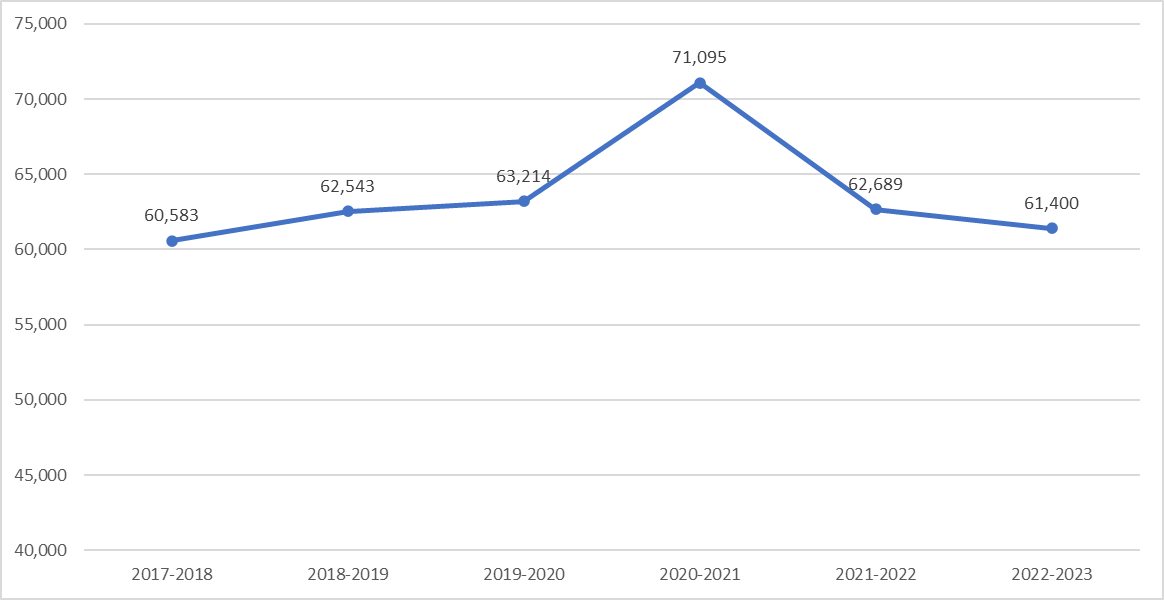
This year's (estimated) final volume is actually much less of a drop than one might have thought earlier in the year. At the beginning of November, applicant volume was down by almost 15% compared to 2021-2022. The normalization since then just shows how front-loaded that 2021-2022 cycle really was.
This year's more normalized volume is good news for folks applying in the upcoming 2023-2024 application cycle. The further away we get from the anomalous 2020-2021 application cycle, the better for applicants. Bleed-over from that application cycle likely contributed to the following cycles. After all, while law school enrollment increased in Fall 2021, it didn't increase by 8,000 students.
Applicant Volume
The upcoming application cycle looks like it may end up with a slightly higher applicant volume than 2022-2023. The best leading indicator of applicant volume is always the number of people registered to take the LSAT. While other admissions tests are now allowed, the LSAT remains the application test used by about 95% of applicants to law school. The more people who take the LSAT, the larger the potential applicant pool.
Here is how LSAT volume for completed test administrations looks right now.

And here you can see what current registrants look like for the next two test administrations.

Right now, we're running well ahead of the 2022-2023 application cycle in terms of test-takers and first-time test-takers. April and June 2022 saw 24,136 test-takers and 15,418 first-time test-takers. April and June 2023 saw 31,372 and 19,670, by contrast. Some of that might be attributable to not including March 2022's LSAT data in the 2022 count. Based on applicant trends after scores were released, many of those were likely applicants for 2022-2023, not 2021-2022. Still, it's a gap.
August and September look poised to see an increase in test-taker volume compared to last year as well. The highlighted numbers are not final. Registrant volume always drops steadily up through test day, sometimes as much as 30%. But with where the registrant numbers are now, the drop doesn't seem likely to get us all the way to last year's numbers. On August 3, 2022, LSAT registrant volume for August and September was about 10% lower than it is today.
LSAT data isn't everything, but it's highly suggestive. And the numbers right now suggest that there will be a bigger pool of potential applicants. One thing to keep an eye on is first-time taker data. No matter how many times you take the LSAT, you're still only one applicant. If we see higher ratios of retakers in August and September compared to last year, that will ease the impact of the April and July increases.
Applicant LSAT Scores
Applicant volume isn't the only component of the competitiveness of an application cycle—the numerical strength of the applicant pool also matters a great deal. In the last few application cycles, we have seen applicants' LSAT scores increase dramatically.
Percentage of LSAT Applicants with 160-180 Scores Over Time
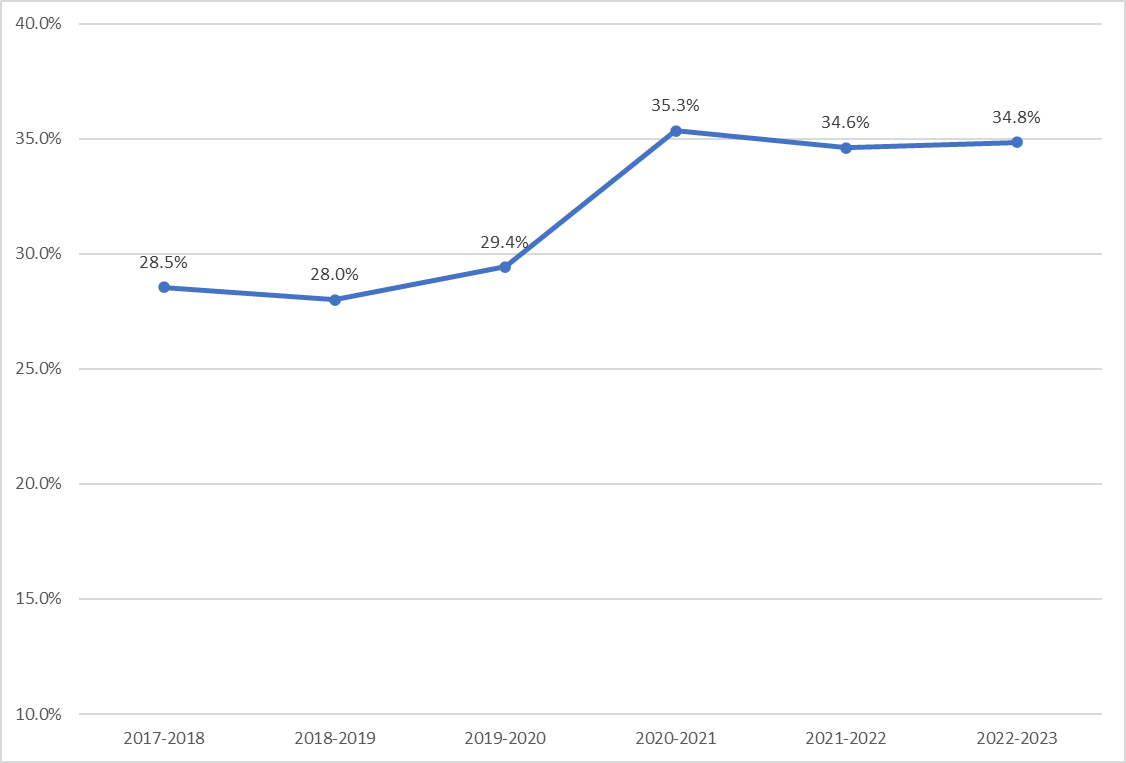
Total Number of LSAT Applicants with 160-180 Scores Over Time
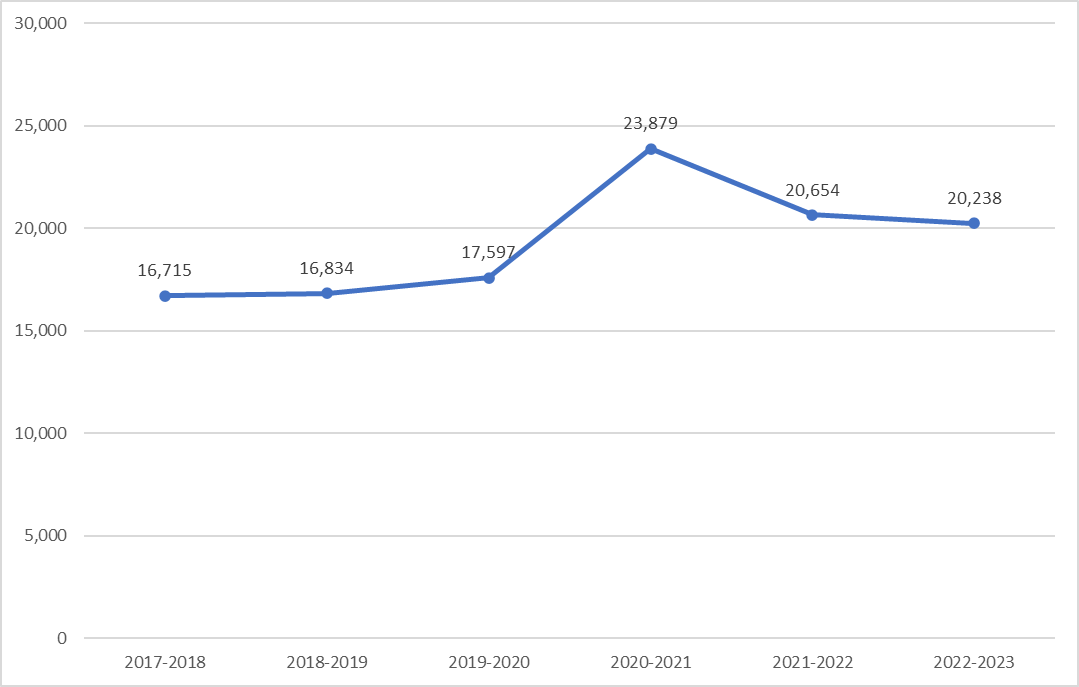
Both the percentage of applicants and the total number of applicants with LSAT scores in the highest bands have gone up dramatically in the post-COVID cycles. Meanwhile, the opposite has happened on the lowest end of the scoring scale.
Percentage of LSAT Applicants with <140-149 Scores Over Time
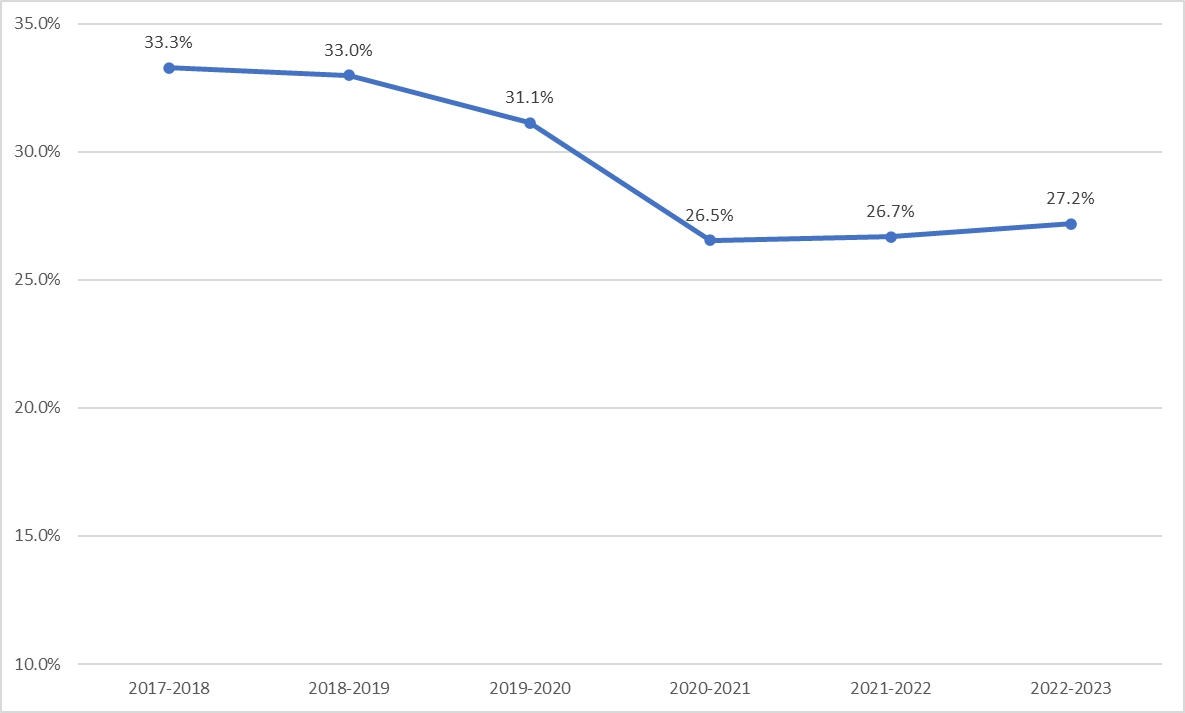
Total Number of LSAT Applicants with <140-149 Scores Over Time
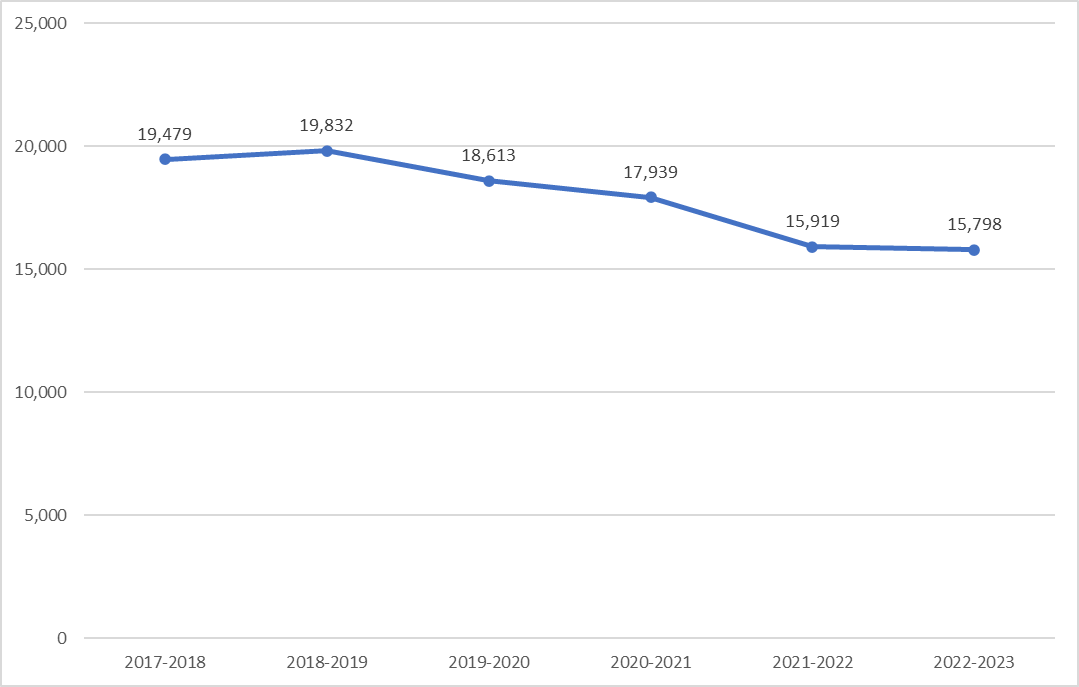
That helps to explain why the 2021-2022 and 2022-2023 application cycles haven't felt that much less competitive, even though they've had marked declines in applicant volume compared to 2020-2021. Applicant LSAT scores remain quite high. Will that continue in 2023-2024? We're not sure. We expected that the increase in top-scoring applicants would have normalized by now, and it hasn't. It's possible that part of the reason behind this is that applicants have adjusted to the increase in competition by preparing for the LSAT more and taking the test more frequently. We've certainly seen an increase in the proportion of retakers. If that continues, then this may just be the new normal, and the LSAT bar could be higher for applicants going forward.
Other Trends to Anticipate
The 2022-2023 cycle will likely be different for other reasons as well. For one, the Supreme Court's decision in SFFA v. Harvard will lead to admissions offices having to rethink how they do certain things. Schools are likely to go slower with their decision-making as they adjust to the new reality and try to gauge what other schools are doing. You could see a scenario where there's a slow start with respect to offers of admission until a few schools get going—which will then crank up the waves. If we had to guess, given this and the changes we talk about below, and with schools now trying to at minimum at least feel out if AI is present in applications (as a practical matter, there is AI detection software available, though of course it is imperfect), we could see one of the slowest starts to significant admit decision-making that we've seen in many years. But, two pieces of good news come with that:
- As we just podcasted about, there is no urgency to submit early. Submitting with your strongest possible application should be your focus.
- Schools have to fill classes. It's how they pay their faculty, staff, and bills. A slow pace does not impact class size; it just pushes things back later. Which is why we had massive admit movement in 2023 this past cycle and expect a great deal in 2024 this cycle. And we will consistently provide applicant volume updates reports when they become available throughout the cycle.
The changes in the U.S. News rankings methodology may also have an impact. Under the new methodology, there is much less incentive to chase medians. They still matter, but as far as rankings are concerned, they don't matter nearly as much as they historically have. On the other hand, employment is now by far and away the most important rankings consideration. We may see law schools begin focusing more on employability as a key trait they look for in applicants. We're not saying that schools will completely overhaul how they evaluate applicants overnight. Admissions offices have years of historical data they rely on when making decisions, and law schools are (small c) conservative by nature. Still, this cycle may see the start of a trend in new directions, and that could cause results to be somewhat more unpredictable. We'd expect to see more admits based on strong "softs" from a number of schools, especially for splitters and reverse splitters, and more from those below both medians (albeit deeper in the cycle, as early admits tend to be those with higher numbers).
Overall, we think the upcoming cycle will look pretty similar to the last two. It will be competitive, and there will still be many applicants with high LSAT scores relative to pre-pandemic cycles. The total number of applicants will probably be up slightly compared to 2022-2023—we'll predict about 5% up. It will feel incredibly slow, but with a complementary number of waves of admits later, with some of those late waves not quite as LSAT/GPA driven as before the substantial U.S. News rankings changes. Just keep in mind that, while you can't control the pace of admissions, they will come. And you can control your application strength and quality, which may matter a bit more this cycle than it has in recent memory.


.png)





